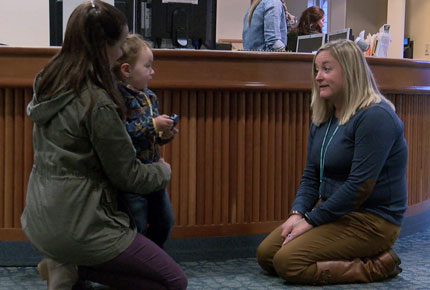Transcript for Building Positive Relationships With Families
This video has captions. You can turn them on by clicking the CC icon at the bottom of the video.
Download a transcript of this video in .pdf format in English or Spanish.
Doug Edwards, Director, Real Dads Forever: I always think of relationships like a spider web. There’s got to be, like, hundreds of them to make that thing strong, and everyone you can do makes the relationship better. So, if a teacher can go in with some kind of positive information about what the child is doing, that’s a great way to connect. And then to be able to ask the parent about, “What are some of the other things that this child likes or likes to do?” or, “How can we connect with them better?”
There are what I call gaps, so there’s usually, like, an academic gap between a parent and a teacher very often. There might be a social gap, just in terms of their social circles. There might be an economic gap. There might be a racial gap, a gender gap. What do you have to do to bridge these gaps and level the playing field and make those connections? And be aware of the fact that a parent might think of themselves as, like, down here, and teacher might think of themselves as up here. How can you bring those two things together?
It’s costly, in terms of time for the teacher, in terms of their own vulnerability to be able to share something about themselves. A lot of times it’s like, “Well, let’s find something out about the parent.” Well, how about the teacher telling them something about themselves that can make that kind of connection? I always tell them, “When you’re going, don’t go in with anything. Leave your clipboard; leave your computer; leave your papers. Just chat and develop a relationship.” And that kind of breaks the ice. And it’s through conversation; it’s through chatting; it’s through humor; it’s through stories. All of those little things are like those little strands of that spider web that makes it strong.
© 2020 Center for Early Childhood Education at Eastern Connecticut State University
May be reprinted for educational purposes.



